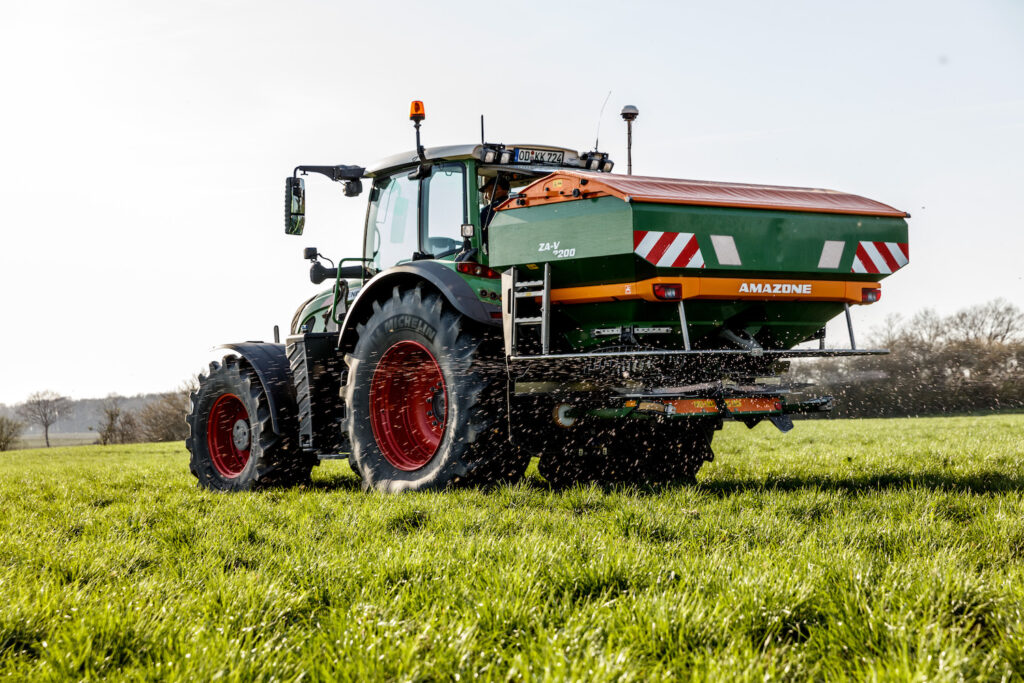Managing grassland effectively during high fertiliser pricing
19th November 2021
With fertiliser costs spiking, effective management of your grassland is vital for ensuring growth potential and a strong ROI. On a recent Yara ‘Grow the Future’ podcast, Philip Cosgrave, country grassland agronomist at Yara, offered his thoughts and advice considering the current circumstances.
“It’s a big challenge for the livestock sector,” says Philip. “Arable farmers may have made a straightforward economic calculation about their optimum N rates, but livestock farmers also have to calculate making forage to feed their animals, as substituting homegrown forage with purchased feed will be more expensive.”
Like other sectors, the fertiliser industry has also experience multiple problems with logistics and deliveries. As spring approaches, this is yet another thing that farmers must account for.
Reducing rates
“There are many things to think about,” says Philip. “For example, the actual return on dry matter per kg of N is particularly variable in the spring, depending on weather and soil conditions. Sometimes we can have a good return of (12-15kg of dry matter per 1kg of N), sometimes far less (3-5kg of dry matter per 1kg of N).”
In addition, Philip suggests that reducing N rates on first-cut silage fertiliser could ultimately be problematic: “The most reliable return on N is in the first cut and we don’t know what the weather’s going to be like later. Reducing N in hope that costs will come down and you can make up deficit later that could be quite risky.”
“ Those savings can also incur costs elsewhere. I would look at maintaining optimum N rates on first cut. Reducing the number of hectares needs to be carefully considered and worked out according to how much silage you actually need.”
Straight N
Is a straight N product worth switching to? Here, Philip is quick to answer. “There’s no point switching,” he says. “If you’ve spread using a compound fertiliser in other years and then switch back to straight N, you’re likely to suffer a 10% yield loss at minimum, with potential other consequences.”
“We recommend continuing to use an NPKS fertiliser in order to maintain NUE (Nutrient Use Efficiency).”
Slurry and manures
Farmer should look to utilise more slurry in the spring for grazing and first cuts, as spreading in the spring increases the N availability within it. By applying earlier, we can effectively reduce fertiliser requirements by about £5 or £6 per 10 m³.
“There is huge variability, not just in our soils but manure,” says Philip. “This year it would be worthwhile getting it analysed and really get some accuracy in terms of how much purchased fertiliser you can replace.”
Intensively stocked grassland farms in particular should also consider soil testing more regularly to monitor soil fertility trends. Organic manures are often applied on the same parts of the farm, year after year, for a number of reasons, but this ultimately undermines the potential value of this resource.
“Fertiliser recommendations are not an exact science,” says Philip. “Remember, grass requires a continuous and balanced nutrient supply from the soil to achieve its production potential. If a farm is regularly soil testing, say every three years, then the £1 ha/year cost is money well spent.”
Prioritise efficiency
At the close of the podcast, Philip asks farmers to consider their options and not just assume that what worked in the past will necessarily produce the best results: “Look at soil temperatures and long-range forecasts. For example, if we wait until the grass is growing before applying, we can miss out on potential early grass growth. Applying when soil conditions are right increases the amount of grass grown over a given period. This early grass is very valuable.
“Basically, regardless of the price of fertiliser we should be looking at efficiency. Nutrient management planning should be done earlier rather than later. Spread the risk where possible and optimise your first cut – it’s where you get the best bang for your buck per kg of N.”

